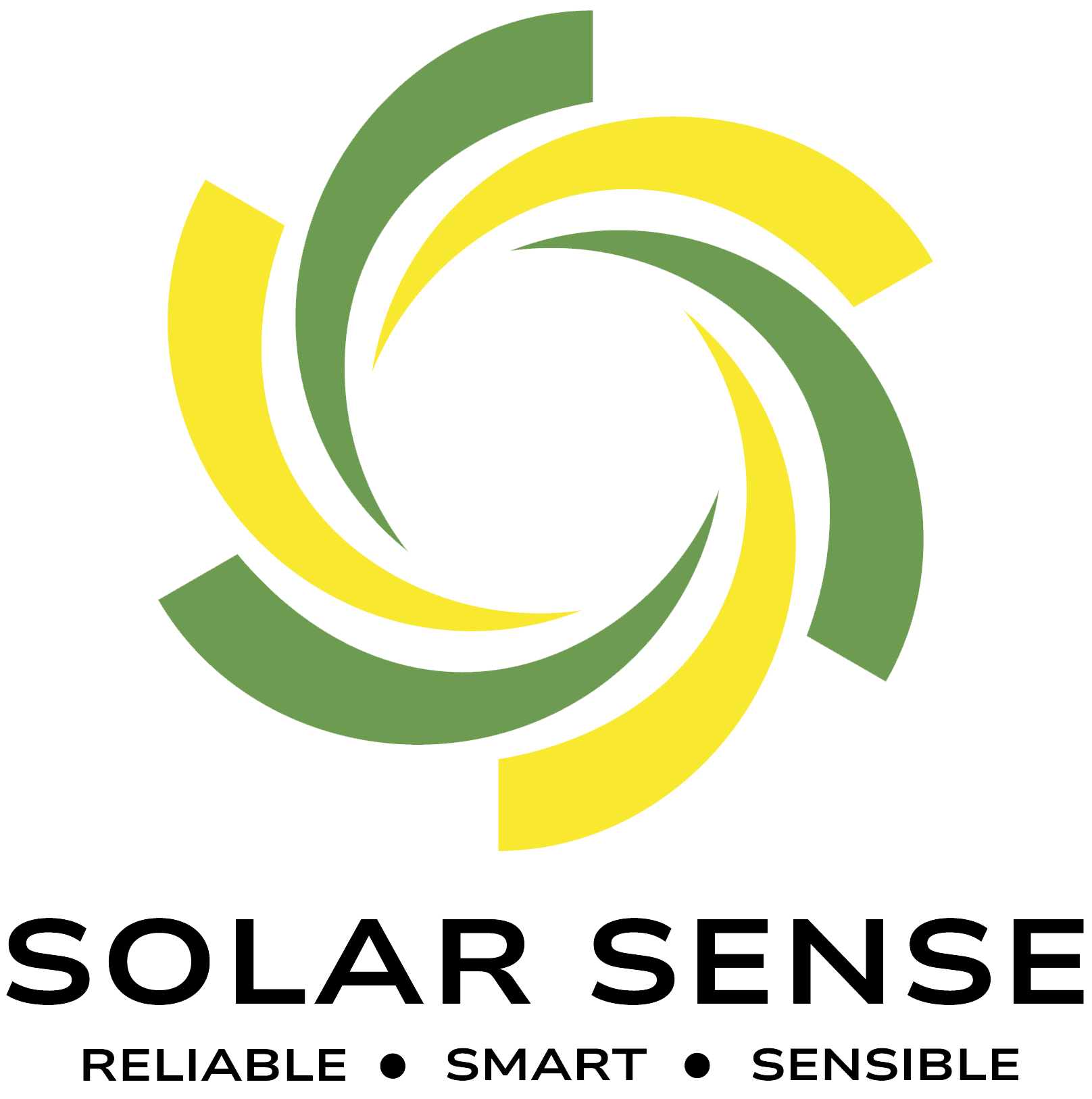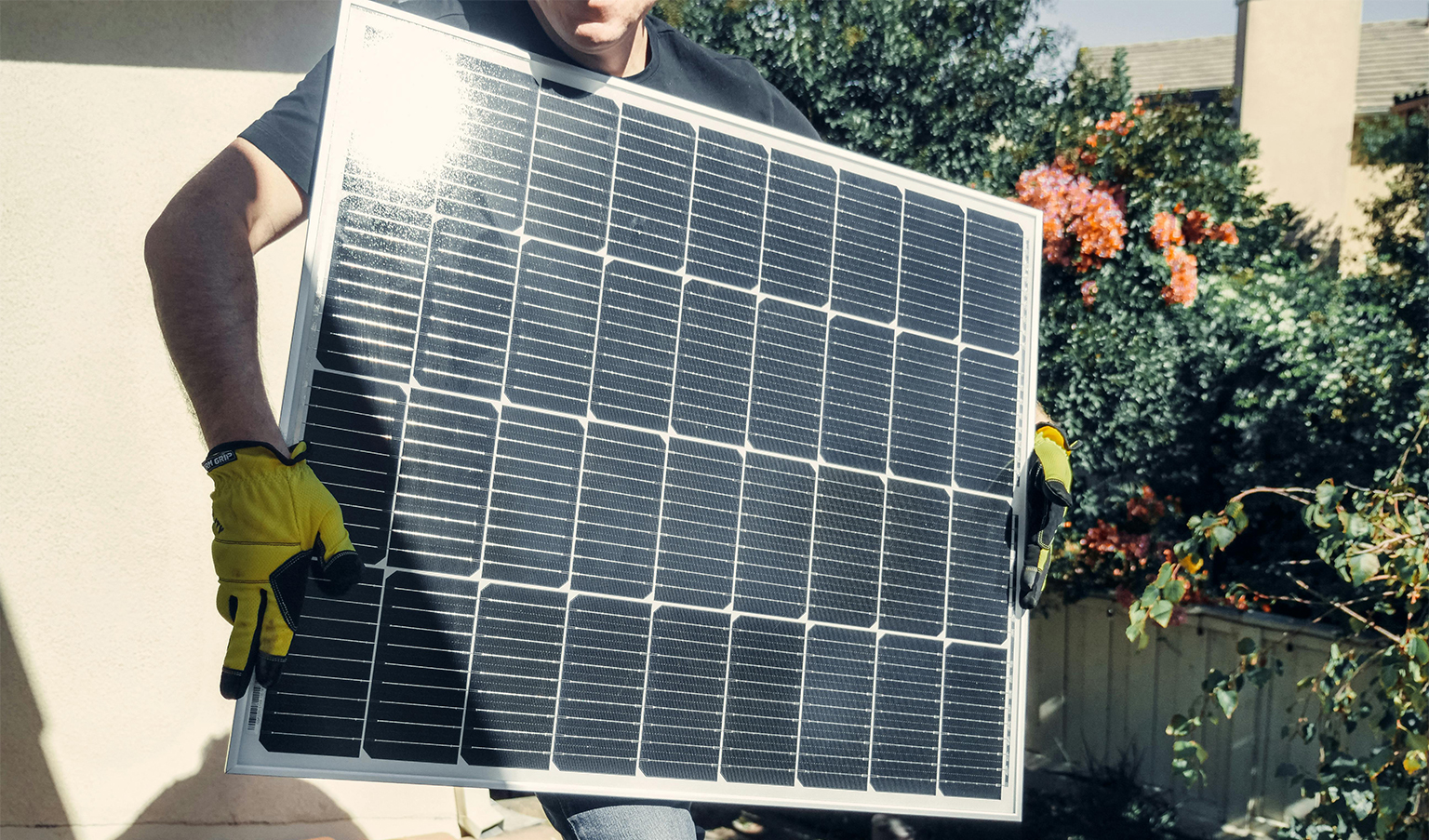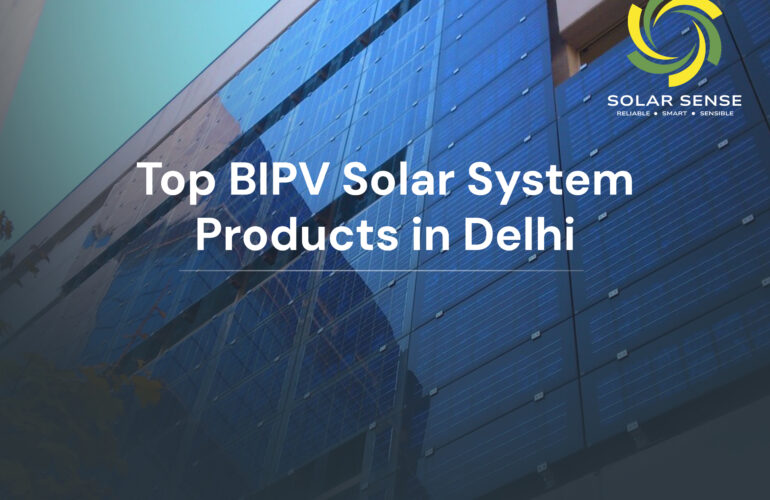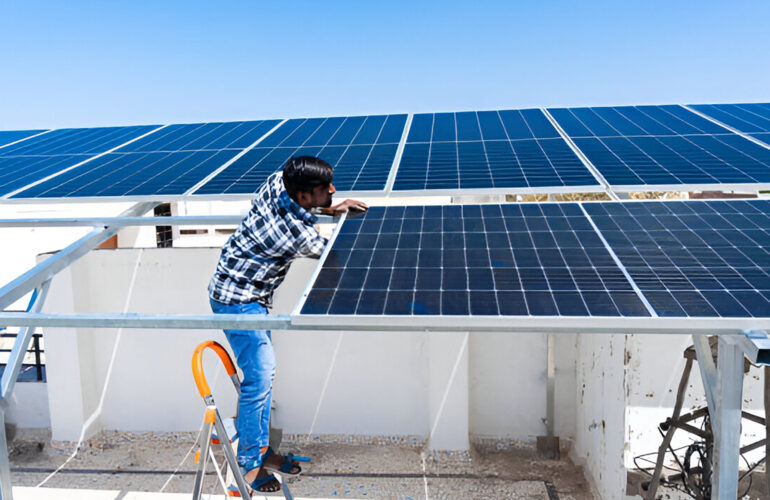Energy obtained from renewable sources is known as renewable energy, and it has gained a lot of acceptance in recent times. In the context of climate change and the depletion of fossil fuels, there has never been such a high demand for new, high-efficiency, and environmentally friendly energy resources. Compared to other technology classes, thin film solar panels present the most promising technology within the solar market as they have many features and applications. Such possibilities will be addressed in an upcoming post by the author, including the advantages, how it works, and the prospects of thin film solar panels.
What Are Thin-Film Solar Panels?
Thin-film solar panels convert light into electrical energy using the photovoltaic effect. These lightweight, second-generation flexible thin-film cells contain stacks of photovoltaic active layers that are 300-350 times thinner than conventional silicon. They can be used for portable devices and are either fitted with a rigid casing or mounted on a bendable substrate. In contrast, thin-film panels are less efficient and use more floor area than conventional panels to achieve the same amount of output energy. On the other hand, they achieve a better temperature coefficient of performance which means their output will decrease less during hot weather.
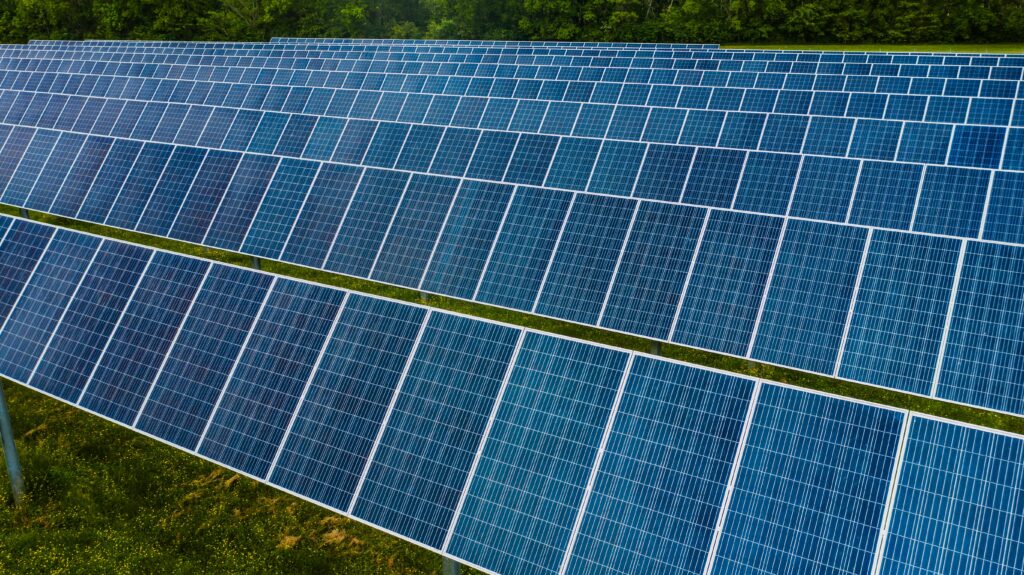
Types of Thin-Film Solar Panels
Crystalline silicon makes up conventional solar panels, while whole layers of PV material make up thin-film panels. There are four main types of thin-film solar panels:
- amorphous silicon (a-Si),
- Cadmium telluride (CdTe)
- Copper indium gallium selenide or diselenide (CIGS)
- Organic Photovoltaic (OVP)
Each type has different materials, affecting cost and efficiency, but all contain photovoltaic material, a conductive sheet, and a protective layer.
Amorphous Silicon Solar Panels (a-Si)
Amorphous silicon (a-Si) panels are also a class of thin-film solar technology, characterized by not having a crystalline structure, so they are cheaper and less hazardous than normal panels. This was the earliest thin-film technology commonly used in devices such as calculators and small gadgets. They are reported to have an energy conversion efficiency of 6% to 8%, so a-Si panels have a lower efficiency than crystalline silicon panels, which can achieve efficiencies of up to 23%. They also perform better at low light levels and are less likely to crack due to their flexible nature. However, they only capture one-third of the energy produced by normal panels and are mainly used in applications with low energy requirements such as mobile consumer electronics and solar chargers.
Pros and Cons of amorphous silicon solar panels
Amorphous silicon solar panels are lightweight, affordable, and use non-toxic materials. They can be rigid or flexible and have a shorter lifespan than crystalline silicon panels. They are flexible and durable, making them less susceptible to cracks than traditional panels made from solid silicon wafers. However, they lose efficiency quickly after installation and have a shorter lifespan than mono and poly panels. Amorphous solar panels are flexible and adhesive, and high temperatures only have a small impact on productivity. Smaller solar applications, such as portable chargers and RV setups, also make use of them. However, amorphous solar cells are less than half as efficient as conventional silicon cells, with the most amorphous panels hovering around 7% conversion efficiency.
Cadmium Telluride Solar Panels (CdTe)
In the category of thin-film solar solutions, panels made of cadmium telluride (CdTe) are the most popular and cover half the volume in that market. Their efficiency is better than amorphous silicon, falling within the efficiency band of 9% to an acceptable level of 15%. First Solar, one of the main players in manufacturing, has invested $1.5 billion in CdTe technologies. While these point to cheaper costs and faster payback periods, they contain cadmium which is a toxic substance that also raises worker safety and disposal concerns. Also, it is very rare that cadmium is available which makes large-scale production a challenge.
Pros and Cons of cadmium telluride solar panels
Cadmium telluride (CdTe) thin film solar panels have higher efficiency than amorphous silicon panels, cost less in the production phase, installation phase and payback in less time. They make good use of sunlight and generate more electricity at a lower cost. In contrast, they use cadmium which is a heavily toxic metal and thus has disposal problems. CdTe panels have an efficiency in the region of 10-11%, but they do not come close to the efficiency of ordinary silicon panels.
Copper indium gallium selenide or diselenide (CIGS)
Copper indium gallium diselenide (CIGS) panels display efficiencies between 12% and 14% through the application of semiconductor strata and are combined with steel, aluminum, glass and plastic substrates. These have the potential for better efficiency, although it takes longer to achieve a payback period due to production costs. Although cadmium is present in CIGS panels, some companies are now replacing it with the less dangerous zinc oxide. CIGs panels may have these advantages, but the cost is still significantly higher than panels made of CdTe and silicon.
Advantages and disadvantages of CIGS solar panels
CIGS thin-film solar panels offer higher efficiency than amorphous silicon panels, compatibility with multiple materials and surfaces, rigid and flexible options, and longer payback periods. They are more expensive to produce and contain cadmium, but are more environmentally friendly than other thin-film cells. Some models use zinc instead of cadmium, but most contain toxic chemical cadmium. Despite their high efficiency ratings, CIGS panels remain costly to produce, making them difficult to compete with more economical silicon or CdTe panels.
Organic Photovoltaic (OVP)
Organic photovoltaic (OPV) panels use organic materials with photovoltaic properties to produce energy. They have an efficiency of around 11%, higher than a-Si panels but lower than CdTe and CIGS panels. OPV panels are affordable due to their abundant and inexpensive nature. However, organic photovoltaic materials are less durable than inorganic compounds used in other thin-film technologies. Colored and transparent, OPV panels have become popular for aesthetic purposes. However, OPV faces challenges in efficiency, with a typical cell efficiency of around 11%, a shorter lifespan, and ongoing cell degradation issues.
Advantages and disadvantages of organic PV cells
Organic photovoltaic (OPV) thin-film solar panels offer a low-cost manufacturing process, a variety of colors due to absorber variability, and abundant, safe materials. They are popular in the building-integrated photovoltaic (BIPV) market due to their aesthetic appeal and affordability. However, OPV cells currently have low efficiency ratings of about 11%, making it challenging to scale production while maintaining high efficiencies. Research focuses on boosting efficiency, but the technology also has a shorter lifespan than traditional panels and other thin-film options. Cell degradation, unlike inorganic modules, is an ongoing challenge for organically-based photovoltaic products.
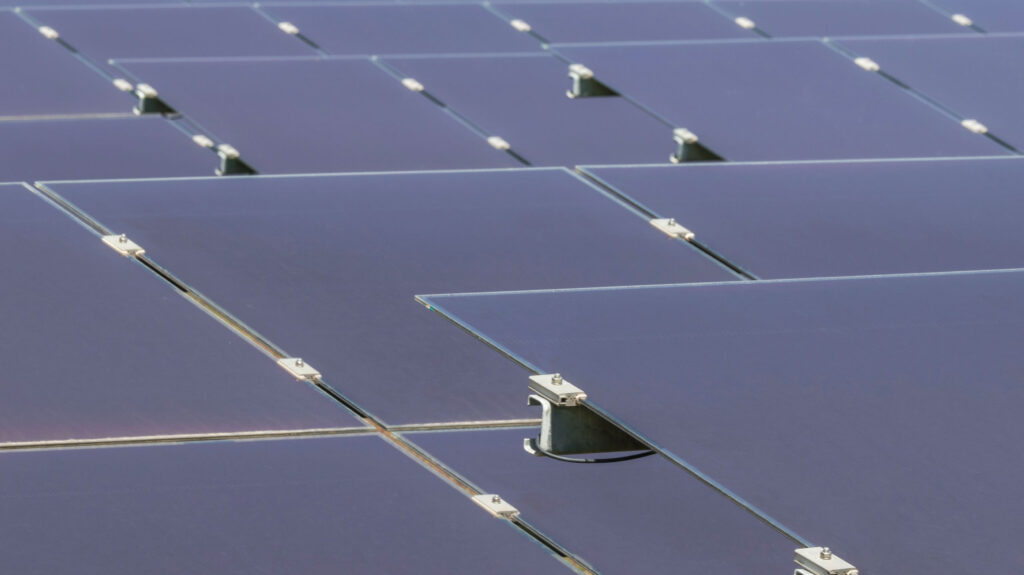
Pros and cons of thin-film solar panels
| Pros | Cons |
| Lower installation costs | Not very viable for residential installations |
| Have less of an impact on the environment because they use less silicon | Lower efficiency ratings than traditional panels |
| Lightweight and easy to move | Need a large area to install enough thin-film panels to produce energy |
| Very durable and have a better temperature coefficient | Typically more expensive per watt, depending on the technology you use. |
How much Thin film solar panels price
Thin-film solar panels are more affordable than traditional panels, costing around $1 to $1.50 per watt. They are not commonly used in rooftop installations due to their lower efficiency. Thin-film panels are better suited for portable and small-scale applications, such as RVs, and can be purchased individually for less than $100. They are primarily used in commercial and utility-scale installations, such as solar panel farms, corporations, and schools and universities. Thin-film solar panels can be used in residential installations, as larger houses with adequate roof space can benefit from economies-of-scale installation and aesthetic benefits. However, traditional PV modules are recommended for large-scale electricity generation.
Our Address and Contact Information
Visit us at our convenient location in Azadpur, Delhi:
- Solar Sense
- 13 Main GT Road, Azadpur, Delhi-110033
- Contact Number: +91-8130025257
- Email: info@solarsense.in
Get in touch with Delhi, India
Call Solar Sense today for a consultation and hear about how we can get you using the power of the sun.
- Phone: +91-8130025257
- Email: info@solarsense.in
Connect With Us For Latest Updates & Offers On Our Solar Solutions.
